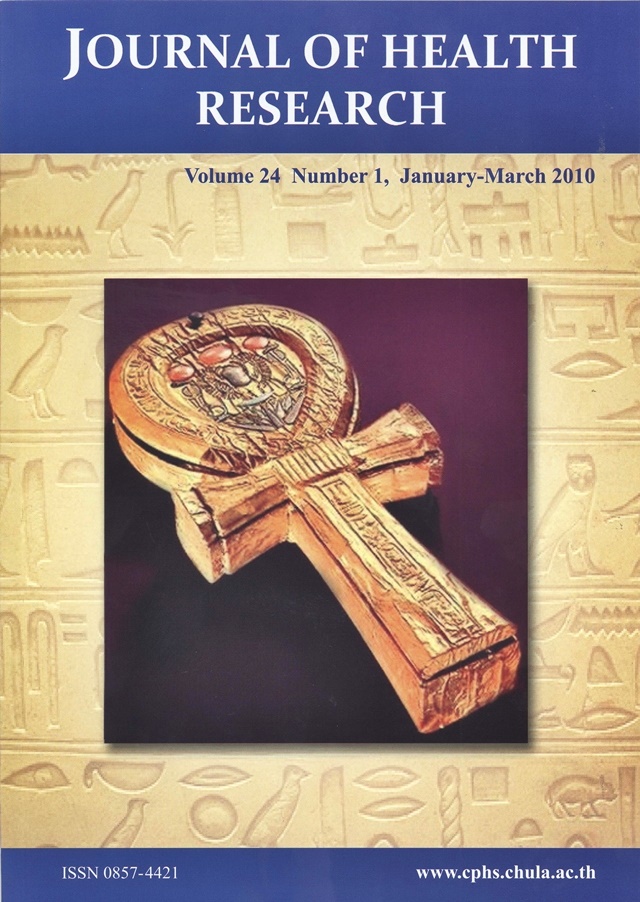Antipyretic Effect of the Ethanolic Extract of Ficus racemosa Root in Rats
Keywords:
Ficus racemosa, lipopolysaccaride-induced fever, yeast-induced pyrexia, antipyretic effectAbstract
Ficus racemosa (Ma-Due-Au-Thum-Porn), an herbal plant, has long been used in many countries for the management of several diseases including diabetes, dysentery and pyresis. In this study, we investigated the antipyretic activity of the ethanolic extract of Ficus racemosa root (EFR) compared to that of acetylsalicylic acid (ASA) using lipopolysaccaride (LPS) and brewer’s yeast-induced fever in rats. Pyresis was induced in animals with an intramuscular injection of LPS (50 μg/kg) 1 h after oral administration of 2% Tween 80, ASA 300 mg/kg or various doses of EFR (50-400 mg/kg). Rectal temperature was measured before the pretreatment and at 1 h intervals for 7 h after LPS injection. All doses of EFR significantly (p<0.001) reduced the increased rectal temperature produced by LPS and were found to be as potent as ASA. In the Brewer’s yeast-induced pyrexia model, eighteen hours after subcutaneous injection of 20% brewer’s yeast (10 ml/kg) rats were orally administered 2% Tween 80, ASA or various doses of EFR (50-400 mg/kg). Rectal temperature was measured each hour for 7 h after the extract administration. All doses of EFR significantly (p<0.05) reduced the pyrexia induced by yeast and EFR doses of 200 and 400 mg/kg were equally potent as ASA.







